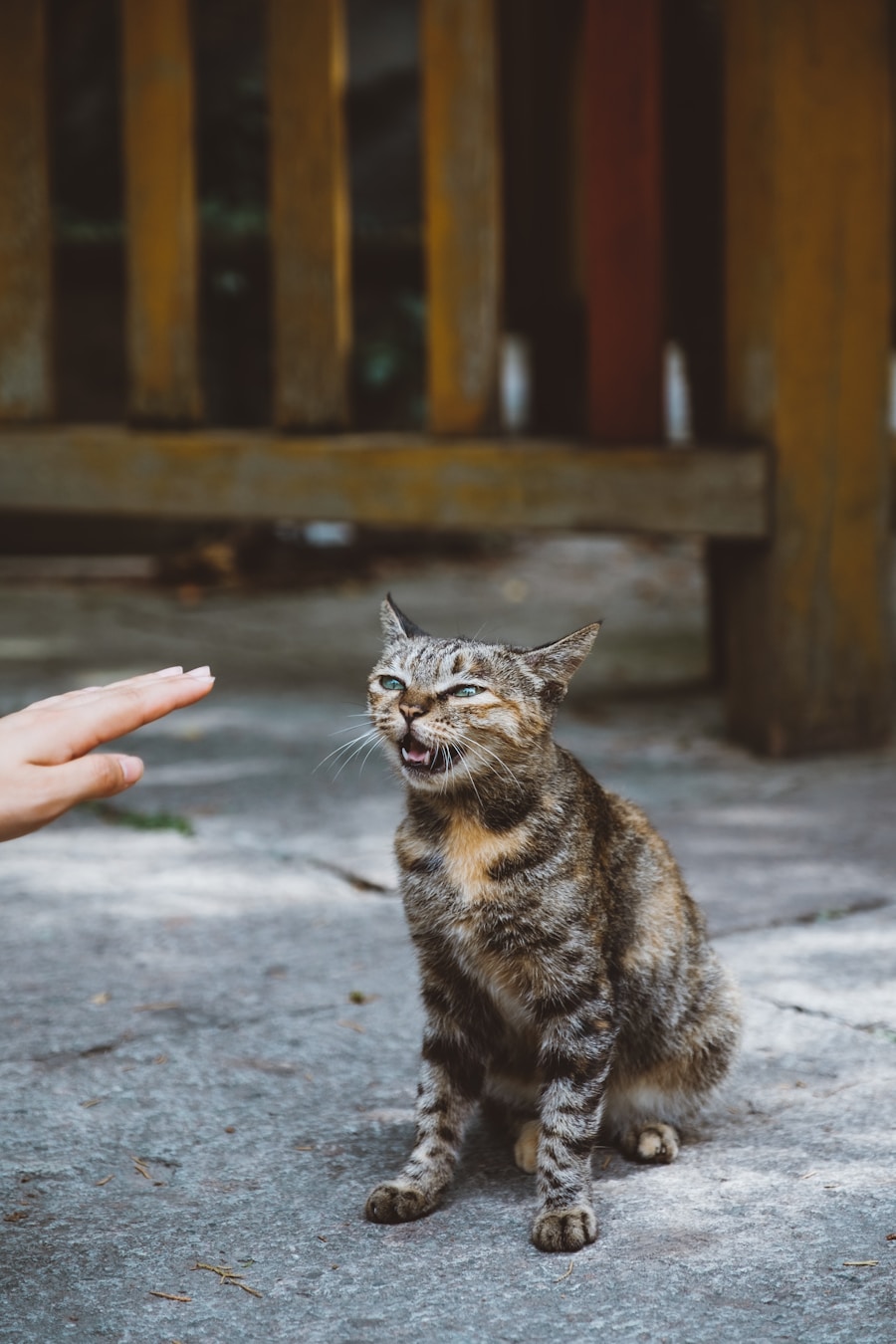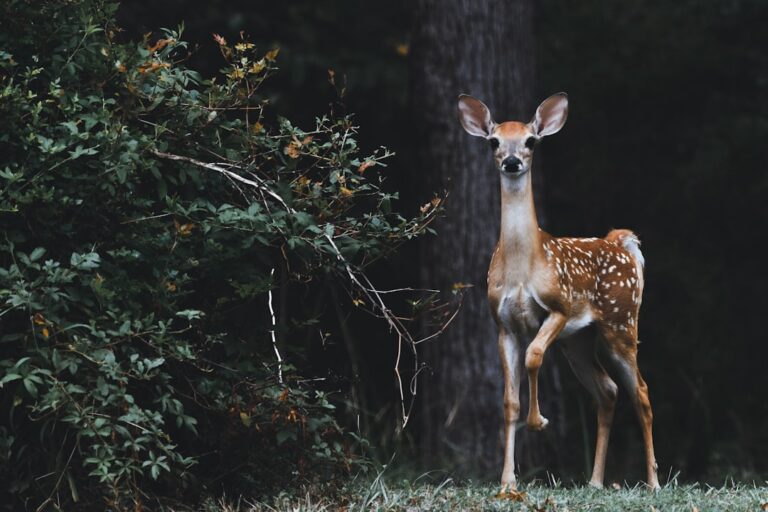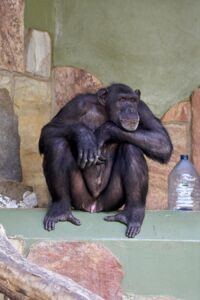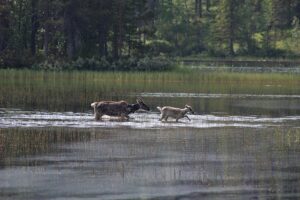Animal behavior is a fascinating field of study that encompasses the myriad ways in which animals interact with their environment, other species, and each other. This discipline, often referred to as ethology, delves into the instinctual and learned behaviors exhibited by various species, providing insights into their survival strategies, social structures, and evolutionary adaptations. From the intricate courtship rituals of birds to the complex social hierarchies of primates, animal behaviors are shaped by a combination of genetic predispositions and environmental influences.
UAs habitats change due to climate change, urbanization, and other human activities, understanding how animals behave in response to these changes can inform strategies to protect endangered species. Furthermore, examining animal behavior can shed light on the evolutionary processes that have shaped life on Earth, revealing how certain traits have been favored over time. By observing and analyzing behaviors across different species, scientists can draw parallels and distinctions that enhance our understanding of biology as a whole.
Communication and Social Structures in Wildlife
Vocalizations and Body Language
For instance, the intricate songs of birds serve not only to attract mates but also to establish territory and communicate with other members of their species.
Chemical Signals and Visual Displays
In contrast, the pheromones released by ants provide a chemical language that guides fellow colony members to food sources or alerts them to danger. These diverse communication methods are essential for maintaining social cohesion and facilitating cooperation within groups.
Social Structures in Wildlife
Social structures in wildlife can vary dramatically between species, influenced by factors such as environmental conditions, resource availability, and evolutionary history. For example, elephants are known for their matriarchal societies, where older females lead herds and make critical decisions regarding migration and foraging. This social structure is vital for the survival of the group, as matriarchs possess knowledge accumulated over decades about water sources and safe routes. On the other hand, wolves exhibit a pack structure characterized by a clear hierarchy, where alpha individuals lead the group in hunting and territorial defense. Such social dynamics are not merely fascinating; they are integral to the survival and reproductive success of these species.
Reproduction and Parenting Behaviors in Animals

Reproductive strategies in the animal kingdom are as diverse as the species themselves, shaped by ecological pressures and evolutionary adaptations. Some animals engage in elaborate courtship displays to attract mates, while others may rely on more subtle signals. For instance, the peacock’s extravagant tail feathers serve as a visual cue to potential mates about his health and genetic fitness.
In contrast, many fish species utilize external fertilization, where females release eggs into the water while males simultaneously release sperm, maximizing reproductive success in environments where predation is high. Parenting behaviors also vary widely among species, reflecting different strategies for ensuring offspring survival. In many bird species, both parents participate in nurturing their young, providing food and protection until they are capable of independent survival.
For example, the albatross is known for its long-term pair bonds and shared responsibilities in raising chicks over several months. Conversely, some reptiles exhibit minimal parental care; after laying eggs, a female turtle may leave her offspring to fend for themselves upon hatching. These contrasting approaches highlight the adaptive significance of reproductive strategies in response to environmental challenges.
Foraging and Hunting Strategies in the Animal Kingdom
| Animal | Foraging/Hunting Strategy | Example |
|---|---|---|
| Lion | Group hunting (pride) | African lion hunting in packs to take down large prey |
| Anteater | Specialized foraging (long tongue) | Giant anteater using its long tongue to reach insects in anthills |
| Osprey | Diving and catching fish | Osprey diving into water to catch fish with its talons |
| Meerkat | Cooperative foraging (sentry duty) | Meerkats taking turns to stand guard while others forage for food |
Foraging and hunting strategies are critical components of animal behavior that directly impact survival and reproductive success. Animals have evolved various techniques to locate and acquire food based on their ecological niches and physical capabilities. Predators like lions employ cooperative hunting strategies to take down larger prey, utilizing teamwork to increase their chances of success.
This social hunting behavior not only enhances their ability to secure food but also strengthens social bonds within the pride. Herbivores exhibit a different set of foraging strategies that often involve selective feeding based on nutritional needs and food availability. For example, deer are known to be browsers that selectively consume leaves and twigs from trees and shrubs rather than grazing on grasses.
This selective feeding behavior allows them to maximize nutrient intake while minimizing competition with other herbivores that may prefer different food sources. Additionally, some animals have developed specialized adaptations for foraging; for instance, woodpeckers possess strong beaks designed for drilling into tree bark to extract insects hidden within.
Defense Mechanisms and Survival Tactics in Wildlife
In the wild, survival often hinges on an animal’s ability to evade predators or defend itself against threats. As a result, many species have evolved an array of defense mechanisms that enhance their chances of survival. Camouflage is one such strategy; animals like chameleons can change their skin color to blend into their surroundings, making it difficult for predators to spot them.
Similarly, stick insects mimic twigs or leaves, providing effective concealment from both predators and prey. Other defense mechanisms include physical adaptations such as spines or venomous bites. The porcupine’s quills serve as a formidable deterrent against would-be attackers, while certain snakes possess venom that can incapacitate prey or deter larger predators.
Behavioral tactics also play a role in defense; some animals engage in distraction displays or feigned death to escape predation. The opossum is well-known for its ability to play dead when threatened, a strategy that can confuse predators long enough for it to escape unharmed.
Migration and Navigation in the Animal World

Migration is a remarkable phenomenon observed in various animal species, characterized by seasonal movements from one habitat to another in search of food or breeding grounds. This behavior is particularly evident in birds; for instance, the Arctic Tern undertakes one of the longest migrations of any animal on Earth, traveling thousands of miles between its breeding grounds in the Arctic and wintering areas in Antarctica. Such extensive migrations are driven by environmental cues such as changes in daylight hours and temperature, which signal the availability of resources.
Navigation during migration is equally fascinating, as many animals possess remarkable abilities to find their way across vast distances. Birds utilize a combination of visual landmarks, celestial navigation using the sun and stars, and even Earth’s magnetic field to guide their journeys. Recent studies have suggested that some species may also rely on olfactory cues or even social learning from experienced individuals within their flocks.
Understanding these navigation strategies not only reveals the complexities of animal behavior but also underscores the importance of preserving migratory routes that are increasingly threatened by human activities.
Play and Tool Use in Animals
Play behavior is often observed in young animals across various species and serves several important functions in development. Engaging in play allows young animals to practice essential skills such as hunting or social interaction in a low-stakes environment. For example, lion cubs engage in mock fights with their siblings, honing their physical abilities while also learning social dynamics within the pride.
Similarly, young dolphins are known to engage in playful activities such as surfing on waves or playing with seaweed, which helps them develop coordination and social bonds. Tool use is another remarkable aspect of animal behavior that showcases cognitive abilities previously thought to be unique to humans. Certain species have demonstrated an impressive capacity for using objects in their environment to achieve specific goals.
For instance, chimpanzees have been observed using sticks to extract termites from mounds or stones to crack open nuts—a behavior that reflects problem-solving skills and an understanding of cause-and-effect relationships. Crows are also renowned for their tool-making abilities; they can fashion hooks from twigs to retrieve food from hard-to-reach places. These examples illustrate not only the intelligence of these animals but also their adaptability in utilizing available resources.
Human Impact on Animal Behaviors
Human activities have profoundly influenced animal behaviors across the globe, often with detrimental effects on wildlife populations and ecosystems. Habitat destruction due to urbanization, agriculture, and deforestation has forced many species to adapt their behaviors or face extinction. For instance, urban-dwelling animals like raccoons have altered their foraging habits to exploit human refuse as a food source, demonstrating remarkable adaptability but also raising concerns about health risks associated with increased human-wildlife interactions.
Additionally, climate change poses significant challenges for many species by altering migration patterns, breeding seasons, and food availability. As temperatures rise and weather patterns shift, animals may struggle to find suitable habitats or synchronize their reproductive cycles with seasonal changes in resource availability. The impact of human-induced changes on animal behavior underscores the urgent need for conservation efforts aimed at preserving natural habitats and mitigating climate change effects.
By understanding how human actions influence wildlife behaviors, we can develop more effective strategies for coexistence with the natural world while ensuring the survival of diverse species for future generations.
Key Takeaways
- Animal behaviors encompass a wide range of activities and interactions within the animal kingdom, including communication, social structures, reproduction, foraging, defense mechanisms, migration, play, and tool use.
- Communication and social structures in wildlife play a crucial role in maintaining group cohesion, establishing dominance, and facilitating cooperation for survival and reproduction.
- Reproduction and parenting behaviors in animals vary greatly across species, with some exhibiting complex mating rituals and parental care, while others rely on instinctual behaviors for survival.
- Foraging and hunting strategies in the animal kingdom are diverse and often specialized to the specific needs and environments of different species, showcasing a wide range of adaptations and techniques for obtaining food.
- Defense mechanisms and survival tactics in wildlife are essential for protecting against predators, securing resources, and ensuring the survival of individuals and groups within a species.
- Human impact on animal behaviors can have significant and often detrimental effects, including habitat destruction, pollution, climate change, and hunting, which can disrupt natural behaviors and threaten the survival of many species.












